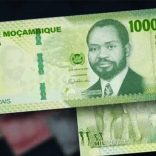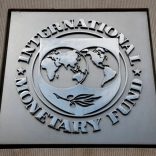Mozambique. Government failed to meet social security targets - CIP | AIM report
Bank of Mozambique raises reserves requirements to 15% dollars only / For foreign currency reserves only

The Bank of Mozambique has again increased its key interest rates, in its attempts to control inflation.
A statement from the Bank’s Monetary Policy Committee, which met in Maputo on Wednesday, announced that the Standing Lending Facility (the interest rate paid by the commercial banks to the central bank for money borrowed on the Interbank Money Market) will rise immediately by 200 base points, from 10.75 to 12.75 per cent.
This rate had been falling gradually since late 2012. It reached 7.5 per cent in November 2014, and remained at that level for a year, but four rate rises in October, November and December 2015 and in February 2016 brought it back up to 10.75 per cent. That rate held in March, but in April the upward trend resumed.
The Standing Deposit Facility (the rate paid by the central bank to the commercial banks on money they deposit with it) rose by 150 base points from 4.25 to 5.75 per cent.
The Compulsory Reserves Coefficient – the amount of money that the commercial banks must deposit with the Bank of Mozambique – has been divided into two. For reserves in local currency, the coefficient remains unchanged, at 10.5 per cent. But for reserves in foreign currency, it rises to 15 per cent, which must be deposited in US dollars. This change will only take effect as from 7 June, while the interest rate changes are immediate.
The Monetary Policy Committee noted that the current situation “remains characterized by sharp risks of inflationary pressure”. This results from the recent depreciation of the metical, plus the severe drought in southern and central Mozambique, and the localized floods in the north – all of which has been made worse “by the politico-military tensions which are limiting the free circulation of people and goods along some of the country’s main roads”.
A further factor which the central bank had to consider was the state guarantees for foreign loans. To the apparent surprise of the governor of the Bank of Mozambique, Ernesto Gove, these guarantees turn out to be much larger than previously believed. Earlier this month Gove said he knew nothing about a government-guaranteed loan (for at least 622 million US dollars) contracted by the state company Pro-Indicus from the banks Credit Suisse and VTB of Russia. These undisclosed loans have now precipitated a crisis in relations between Mozambique and the International Monetary Fund (IMF).
The government guaranteed loans, the Monetary Policy committee warns, “may demand adjustment measures in order to ensure the sustainability of the foreign debt and macro-economic stability”. Clearly, the sharp rise in interest rates is the first of these “adjustment measures”.
The central bank noted that the value of the metical continued to slide in March. On 31 March, the US dollar was quoted on the Inter-Bank Exchange Market at 50.55 meticais, which was a monthly depreciation of the metical of 6.92 per cent. The annual depreciation was about 46 per cent.
The dollar was considerably more expensive in other segments of the market. The average exchange rate in the commercial banks at the end of March was 51.26 meticais, and in the foreign exchange bureaus it was 55.15 meticais (monthly depreciations of 5.28 and 2.55 per cent respectively).
As for the South African rand it was quoted at 3.44 meticais to the rand. The metical had slumped by 16.61 per cent against the rand in a single month. The annual depreciation against the South African currency was 21.13 per cent.
Provisional figures indicate that on 31 March, the country’s net foreign reserves stood at 1.85 billion dollars, an increase of 33.7 million dollars in comparison with the February figure. The reserves are enough to cover 3.69 months of imports of goods and non-factor services, when the operations of the foreign exchange mega-projects are excluded.
The Monetary Policy Committee also decided that the central bank will intervene in the inter-bank markets to ensure that, by the end of April, the monetary base does not exceed 71.083 billion meticais.
In March, as in February, the target for the monetary base was missed. It hit 70.297 billion meticais rather than the 66,443 billion planned – a deviation of 5.6 per cent. The monetary base is now 29.2 per cent higher than it was a year ago.












Leave a Reply
Be the First to Comment!
You must be logged in to post a comment.
You must be logged in to post a comment.